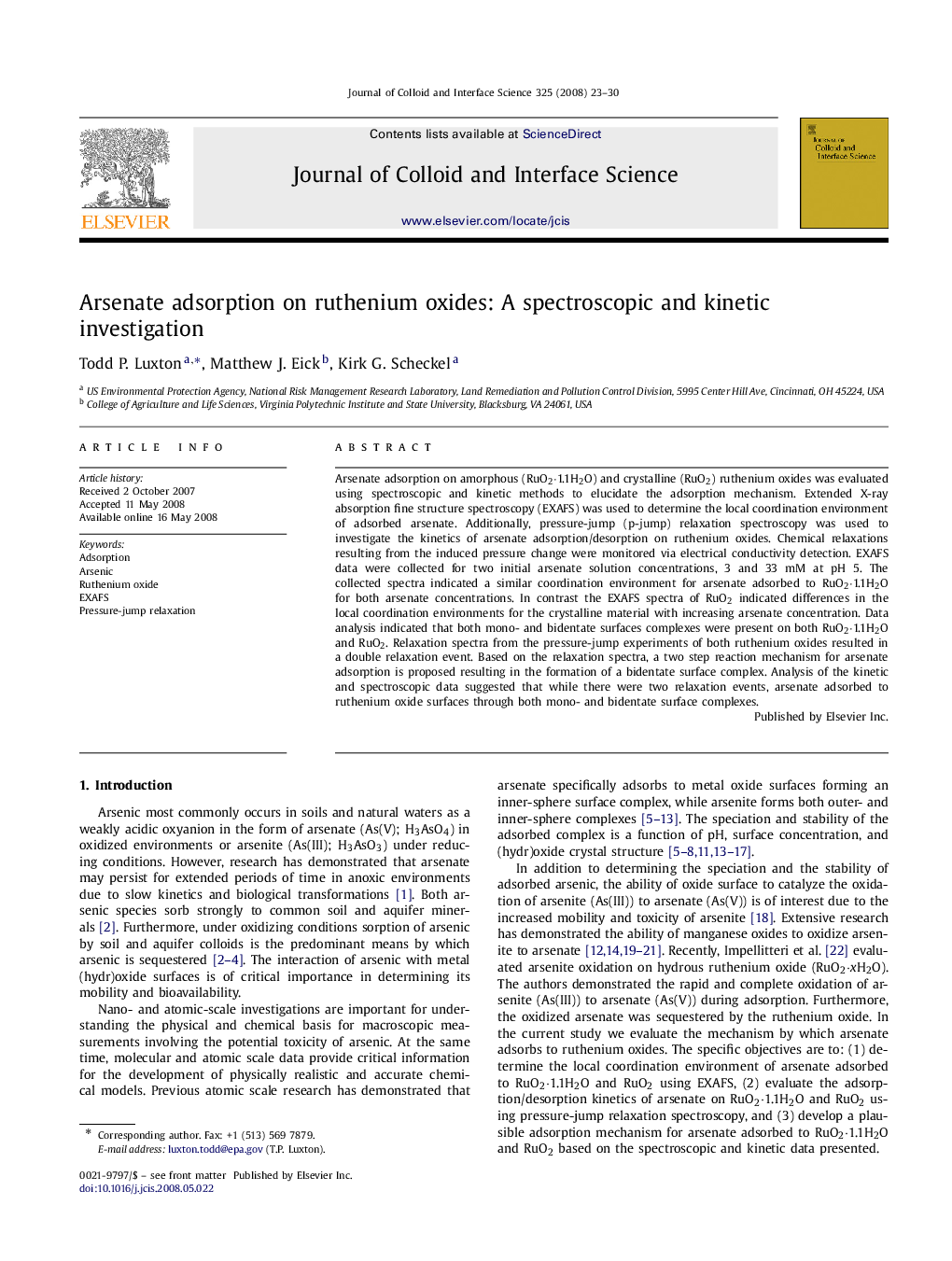| Article ID | Journal | Published Year | Pages | File Type |
|---|---|---|---|---|
| 611038 | Journal of Colloid and Interface Science | 2008 | 8 Pages |
Arsenate adsorption on amorphous (RuO2⋅1.1H2O) and crystalline (RuO2) ruthenium oxides was evaluated using spectroscopic and kinetic methods to elucidate the adsorption mechanism. Extended X-ray absorption fine structure spectroscopy (EXAFS) was used to determine the local coordination environment of adsorbed arsenate. Additionally, pressure-jump (p-jump) relaxation spectroscopy was used to investigate the kinetics of arsenate adsorption/desorption on ruthenium oxides. Chemical relaxations resulting from the induced pressure change were monitored via electrical conductivity detection. EXAFS data were collected for two initial arsenate solution concentrations, 3 and 33 mM at pH 5. The collected spectra indicated a similar coordination environment for arsenate adsorbed to RuO2⋅1.1H2O for both arsenate concentrations. In contrast the EXAFS spectra of RuO2 indicated differences in the local coordination environments for the crystalline material with increasing arsenate concentration. Data analysis indicated that both mono- and bidentate surfaces complexes were present on both RuO2⋅1.1H2O and RuO2. Relaxation spectra from the pressure-jump experiments of both ruthenium oxides resulted in a double relaxation event. Based on the relaxation spectra, a two step reaction mechanism for arsenate adsorption is proposed resulting in the formation of a bidentate surface complex. Analysis of the kinetic and spectroscopic data suggested that while there were two relaxation events, arsenate adsorbed to ruthenium oxide surfaces through both mono- and bidentate surface complexes.
Graphical abstractSchematic representation of the proposed arsenate adsorption mechanism on ruthenium oxide.Figure optionsDownload full-size imageDownload as PowerPoint slide
